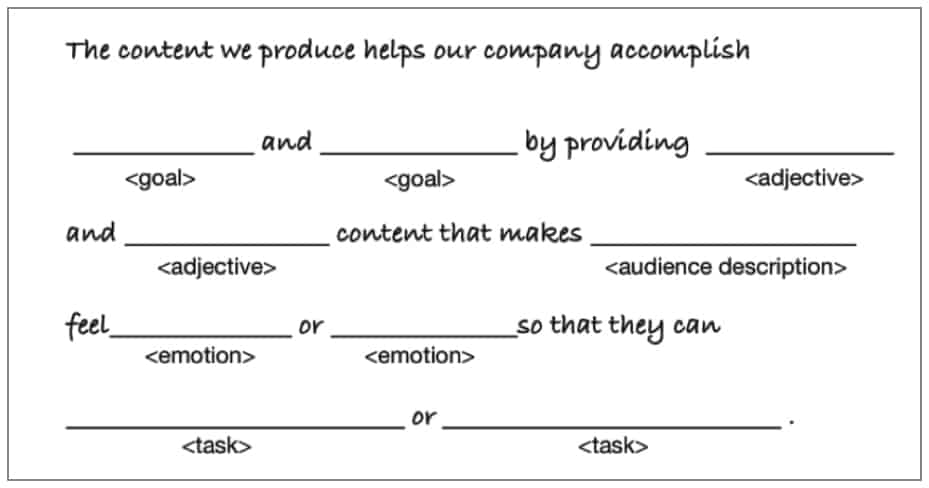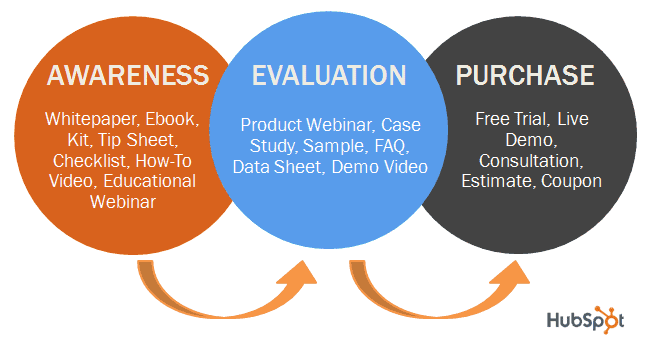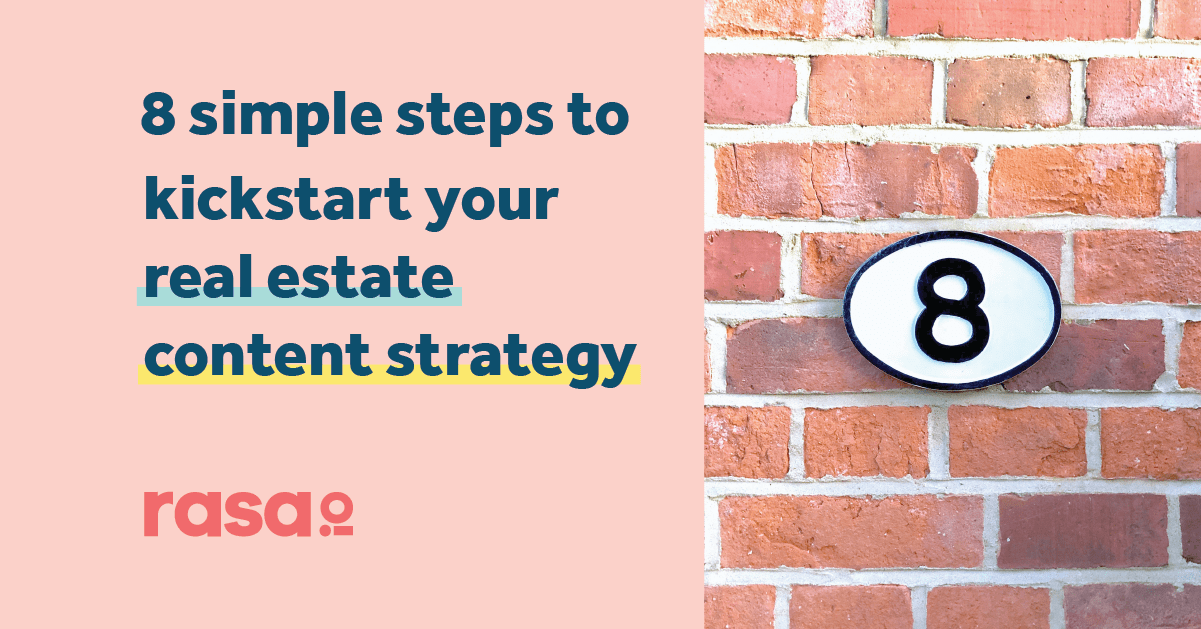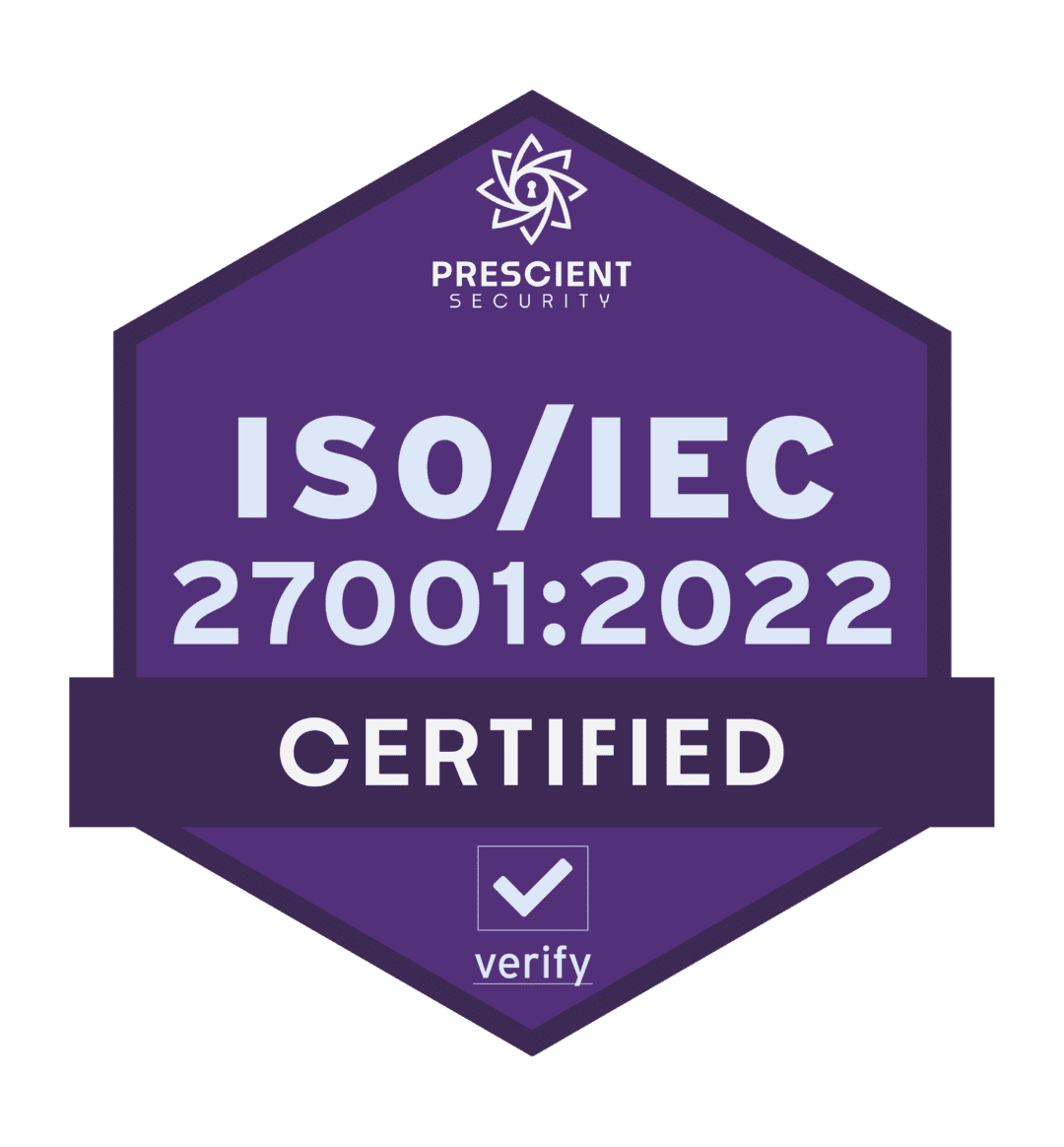Whether you’re a seasoned real estate content creator or just getting started, having a content strategy—and revisiting it on a regular basis—will help you unlock long-term success, keeping fresh ideas flowing and your clients engaged.
To be clear, you don’t need a perfect content strategy in place in order to start creating content, but having one can mean the difference between creating OK content and great content. You can start a blog or send an email newsletter to your audience right now, see what people respond to, and develop your strategy as you go. It takes time and organization to write out a content strategy that works for you. Below, you’ll find some key questions and steps to help jumpstart that process.
Want a head start? Here you go:
Why should you think about content strategy?
You want people to find value in the content you create. A content strategy helps ensure that what you create resonates with your audience. It can also give you an edge over the competition. Just like real estate, content marketing is a competitive space. 77% of companies that succeed the most in content marketing are planning to increase their content marketing budgets in 2023, according to an analysis by SemRush. But only about 40% of brands have a documented content strategy, according to the Content Marketing Institute. Thinking through the planning steps outlined in this blog post will put you ahead of your competitors.
There are plenty of tools and services that make it easier for real estate professionals to get up and running with content while you map out your short- and long-term content goals. Here at rasa.io, our aim is to provide a quick and simple way to deliver content through an email newsletter without a whole lot of front-end work on your part. (If you see email newsletters in your future or you want to recharge your existing newsletter, be sure to check out how our AI-powered newsletter tool works.)
That said, if you’re making a long-term investment in content marketing, including building your email newsletter into a larger content strategy, it’s wise to take some time to think through your approach. In this post, we’ll walk you through what content strategy is, why having content strategy matters for real estate professionals, and how to develop (and document) a content strategy for your brand.
What is content strategy?
Content strategy is how you create, post and manage useful content that you produce on your own and retain ownership of. That work can include everything from written work to downloadable content to video. At a high level, your content strategy should outline the ethos and purpose behind the content you create. It also digs into the nuts and bolts of how content is created.
At this point, you’re familiar with how content marketing can boost your brand’s online presence and open new channels for conversing with real estate clients.
It’s not enough to throw content together and slap it online. Content marketing needs to have intent and purpose in order to engage clients.
Before we dive into the steps for developing content strategy, let’s look at three terms that define aspects of content strategy. These words are often used interchangeably, but, as the Content Marketing Institute notes, they differ in purpose.
Content marketing strategy
Content marketing strategy refers to the purpose behind the content you create. In other words, your “why.”
Your content marketing strategy provides the big picture overview of your content marketing approach, including the following questions.
⇒ Why are you creating content?
Think about the big picture reason that you are sharing your content with your audience. Do you want to better inform homeowners in your area? Connect your community to financial resources? Boost civic pride? Pinpoint the why behind your content. It will be an important anchor as your content strategy grows.
⇒ Who are you helping?
Think about the groups of people you are seeking to help with your content. Put another way: Who will be reading what you produce? Are you looking to speak to one, specific audience or do you have multiple audiences in mind? You serve a lot of different kinds of clients as a real estate agent; it follows that you will be reaching different kinds of readers and viewers with your content.
Having an idea of who you are helping will make it easier to map out the topics that matter most to your target audience(s). In addition, using a range of content types and channels will help you connect and drive engagement with each of the audiences you have in mind.
⇒ How will you help them?
Think about how your content will help the target audiences you have in mind. Will your content be educational? Inspirational? Entertaining? Consider what content formats you want to pursue to best get your messages across, for example, lists, guides or explainers.
In addition, use your content marketing strategy to build the business case for pursuing original content. Pinpoint specific business goals that you hope to achieve by publishing original content. Are you pursuing content marketing in order to lower marketing costs? To reach a more targeted segment of customers? What will success look like?
Having an established vision for how your original content factors into the success of your real estate brand helps you stay focused on long-term gains, and gives you the flexibility to experiment with new approaches.
Content strategy
Content strategy refers to the part of your plan that lays out how original content is created, published and governed. Your content strategy is broader in scope than your content marketing strategy, providing the roadmap for how content will get online and what it will look like when it is in front of your audience.
Here are the questions to ask as you’re planning your content strategy:
⇒ What problem(s) are you solving for your audience?
Dig deeper into defining the problem your audience faces and the type of information you will provide to help them. As a real estate agent, you provide valuable guidance, marketing and insight to people buying or selling a house. Likewise, good content educates your audience as they work through a specific challenge. Think about how your content will support people who have already purchased or sold a home, as well as people who have yet to enter the real estate market.
Use the problem definition to pick three to four overarching topic categories that you’d like your content to focus on. Ideas include personal finance, home improvement or community events. For example, if one of your target audiences is young parents who have recently moved to the area, a problem they might face is saving enough money for their children’s college education and retirement. Consider developing content that addresses personal finance as a homeowner. Keep the focus on the client, and the challenges they need to address.
⇒ How is your brand uniquely positioned to solve that problem?
There are roughly 1.39 million real estate agents working in the United States, according to the National Association of Realtors.
What sets your real estate brand apart? Think about why your audience should be listening to you, and write those reasons down.
⇒ What content formats will you use?
What do you see when you envision your audience consuming your content? Are they clicking on a blog post or watching a video? Are you sharing infographics on social media or offering a link to a downloadable guide? Think about the formats that are best for delivering information on the topics you’d like to focus on.
Don’t forget to factor in cost. Multimedia formats like video or a podcast often require a greater investment of time and money. Use this step to start thinking about your content marketing budget.
⇒ Where will you publish content?
Just as there are different content formats, there are a range of channels on which to share the content you create. Your options for publishing content fall into two buckets: the channels you own and third-party channels. Channels you own include your website, your blog and your email newsletter. Your social media accounts, including Facebook, Twitter and Instagram, are examples of third-party channels.
⇒ How will you manage content creation?
Eek. This is a big question, and likely gets at the heart of why you’re reading this blog post in the first place. Mapping out how you plan to execute your content strategy–and where your content will live online–can be intimidating. But it’s pivotal for making sure your content strategy stays on track.
To make this step a bit more approachable, let’s talk about topic clusters. A topic cluster is a content planning strategy that helps you plan out your content and map out next steps in the creation process using topics. Start with a topic (choose one of the three or four topic categories you want to focus on) and start writing down all of the content ideas you have that support that topic. Be sure to note what format each piece of content will take.
Think of your core topic as the hub, and all the supporting posts, videos and infographics as spokes that fan out from the hub. This is a useful way to visualize your brand’s content priorities, and is the foundation for planning an editorial calendar. This Hubspot video provides a great explanation of a topic cluster and how to use them.
Source: HubSpot
Once you’ve thought through these questions consider distilling your findings into a core content strategy statement.
We like this Mad Lib-inspired template from the Content Marketing Institute. The statement should provide a simple and straightforward overview of your business goals, target audience and audience needs.

Source: Content Marketing Institute
Content plan
Content plans go into the details of day-to-day content production. A content plan is tactical, delving into the topics you plan to cover, the kinds of content you will create and assigning tasks and deadlines in the content creation process to team members. Your content plan can also lay out how you plan to measure the success of a specific content initiative.
It’s important to note that you need a content strategy before you can start laying out a content plan. Think of this as your game plan for executing on the topic clusters outlined in your content strategy.
Why real estate agents need a content strategy
Content marketing is a cost-effective way to boost traffic to your real estate website and generate new sales leads, while also providing valuable insight to your potential clients and strengthening relationships with those you serve. That’s a lot of per-dollar punch compared with other forms of marketing.
Even just one, well-planned blog post has the potential to generate organic search traffic for months, even years, elevating your brand over the long-term. Pair an effective blog post with a solid lead magnet—a guide or eBook, for example—and you’ve built yourself a reliable pipeline for new sales leads over time. A well-performing post also provides the opportunity to experiment with other types of marketing, for example, social media advertising.
Developing a content strategy helps you discover what content works more quickly. There are tons of possibilities with content marketing, which makes it easy to be pulled in a lot of different directions right off the bat. There’s nothing holding you back from diving into creating content without a strategy. You may land on some wins. Or you may not.
Having a content strategy in place makes the process less of a crapshoot. It keeps you focused on pursuing and measuring the success of your content, as well as discovering what your audience likes and delivering more of that. The key takeaway? It’s important to strategize before you dive full force into content marketing.
How to develop a real estate content strategy
Let’s get to it. The eight steps in this blog post will help you visualize a path forward in developing a content strategy.
Those steps include:
- Define your goals.
- Run a content audit.
- Research your audience.
- Pick a CMS platform.
- Start generating ideas.
- Select what types of content you will create.
- Publish your content.
- Measure your results.
Let’s take a closer look at each of those steps.
1. Define your goals.
It’s important to know (and write down!) your goals before you begin planning a content strategy. Again, successful content marketing has a purpose. If you don’t have a clear picture of the reason you are making your content, it will be difficult for your audience to understand the reason they should consume it. Possible goals include:
- Boosting brand awareness
- Improving search ranking results
- Generating sales leads
- Re-engaging with past clients
Once you have clear goals in mind, think about whether content is the best way to reach those goals. Content marketing is a valuable tool but it’s not a universal one. There are cases when content just isn’t as effective. For example, content can be super helpful at generating leads and elevating awareness of your real estate brand, but less so when it comes to actually landing a listing or closing a home purchase.
Consider where your goals fall in the sales funnel. That should inform the type of content you pursue. Check out this graphic from Hubspot for a visual representation of the different types of content and how they align with various stages of the sales funnel.

Source: HubSpot
2. Run a content audit.
If you have already started creating real estate-related content, take an inventory of the content you’ve already produced. Think about how you can build off of that content. If you’re looking to diversify the types of content you produce, consider the types of content you’d like to create next.
Most real estate agents start out with blog posts. Take a look at the blog posts you’ve written so far. Is there an opportunity to gather some of that material into a downloadable guide or eBook? Would any of that information translate well on video? Or in an infographic? Use the content you’ve developed so far as a springboard for your content strategy.
If you’ve been producing content for a year or longer, see what analytics you can gather on specific pieces of content. How did those pieces perform? Use that information to shape your content goals and direction for the upcoming year. Work to align your content goals with your larger organizational goals.
3. Research your audience.
By now you have a general idea of who you think your audience is. Now is when you want to dig a little deeper. Consider developing audience personas for your real estate brand. Envision a typical consumer of your content and fill in their background.
- What age are they?
- Where do they live?
- What do they care about?
- What are they struggling with?
- Does this person have a family?
- What life stage are they in?
Don’t forget to leverage analytics in defining your audience. Analytics can provide valuable insight into how content is performing, where it is being shared on social media, and the websites potential clients are visiting. Use Google Analytics to see where content is getting the most shares on social media. Also, enabling the Demographics and Interests tool in Google Analytics can help provide valuable information on the websites potential clients are visiting.
4. Pick a CMS platform.
CMS stands for Content Management System. This is software you use to create a website, and to publish, manage and track the original content you create.
Look for a CMS that is easy to use and supports the content creation process from start to finish, from creating pieces of content to getting it published online to providing basic metrics to help you gauge the success of your content.
Popular CMS platforms in 2023 include:
- WordPress
- HubSpot CMS Hub
- Joomla
- Drupal
- Wix
- Shopify
5. Start generating ideas.
Now we’re getting to the fun part! Start brainstorming ideas for your next real estate content project. Keep in mind your audience and the problem you are trying to help them with.
Your instinct might be to dive into the kind of high-level real estate topics that you see elsewhere online. Resist that urge. The internet is filled with tons of content and much of it is recycled and not all that unique. You will face an uphill battle when it comes to generating search traffic if you follow what others are doing. Instead, zero in on your niche. What topics are specific to your brand and your audience?
For real estate agents, the answer could be your local and regional expertise. You are constantly exploring and keeping tabs on development in specific neighborhoods in your area. Tap into that savvy to generate original content that stands out. For example, a series of blog posts covering “5 things to know about X neighborhood” is unique to your brand and expertise, and useful to prospective clients.
Having trouble thinking of ideas? Here are a few tools to help get your thoughts flowing.
IMPACT’s Blog About ______ Generator
Think of blog post ideas using this Mad Lib-style tool from IMPACT. It even has a cool draw-your-thoughts feature if you’re fighting writer’s block.
HubSpot’s Blog Ideas Generator
Type in a list of topics and HubSpot’s idea generator will spit out a week’s worth of blog post titles for you to peruse. Enter specific nouns for better results.
6. Select what types of content you will create.
A big benefit of content marketing is the range in types of content available to real estate professionals to market their brands. You have a lot of room for creativity in your approach. Popular content types for real estate agents include:
- Blog Posts
- Video
- eBooks
- Email Newsletters
- Podcasts
- Templates
- Infographics
- Social media
Many real estate agents launch their content strategy with a real estate blog. However, if another content area is calling you–and you have a strong strategy and ideas in place–you can certainly start elsewhere. Email newsletters are a cost-effective way to experiment with content marketing, especially if you already have a list of email subscribers.
Do consider the size of your team and your budget. Starting a blog and writing eBooks may be less cost intensive than launching a video series or podcast.
Read more about the eight types of content marketing in a real estate agent’s toolkit.
7. Publish your content.
You’ve planned out and created your content. Now it’s time to hit publish. Your content strategy should include a short-term plan for publishing—including where certain content will be published and shared—as well as how you plan to organize your content in the long-run. This is where having an editorial calendar comes in handy.
It’s likely that the bulk of the content ideas you generate will be evergreen ideas that are relevant today, next week and months from now. Use a calendar to map out when you want to publish. (This could be as simple as having a physical calendar or a shared Google calendar where you write out plans.) Make it a point to republish and re-share older content that performs well throughout the year.
Be mindful of topics that might have a time hook. The American real estate market is busiest from May to August, which means real estate content related to readying your home for a sale, neighborhood guides and moving checklists could be better suited for summer months. March kicks off the home improvement season; could you spend that month focusing on writing blog posts with home improvement tips?
Being thoughtful about the timing of your content can help produce stronger bumps in traffic for your website and social media traffic.
8. Measure your results.
This brings us to the last (and most important) step in developing your content strategy: measure your results. Measuring the results of the content you create helps you see what is working and what is not, and gives you the information you need to pivot. Posting content without getting feedback on performance is like hosting an open house, but refusing to speak with prospective buyers who stop by. Not quite effective. Google Analytics is a powerful tool for digging into your content results.
You can also ask for feedback directly from your audience. Hard numbers are great to get a high-level idea of where your content marketing is hitting its target. Talking to your audience directly can provide more detailed insight, including what topics are resonating more than others.
Use social media to ask for feedback and comments. Embed a content poll or survey into your weekly email newsletter. You get useful data, and you are showing your audience that you value what they think. Win-win.
The takeaway 😎
Laying out a working content strategy takes time as well as a healthy dose of organization and creativity. Following these steps will help you set a framework for your content journey. But it’s important to remember that you do not need to have a perfect content strategy in place in order to begin producing content. In fact, there is no perfect content strategy. Your real estate content strategy is always going to be evolving and growing as your audience evolves and grows.
Your goal is to think about what your audience needs, create content that meets their needs and measure the results to see if you’re on the right track. The more you refine your content creation process the more refined your content strategy gets.
Congrats! You’ve just leveled up to Content Marketing Strategist. Time to get out there and start creating.












